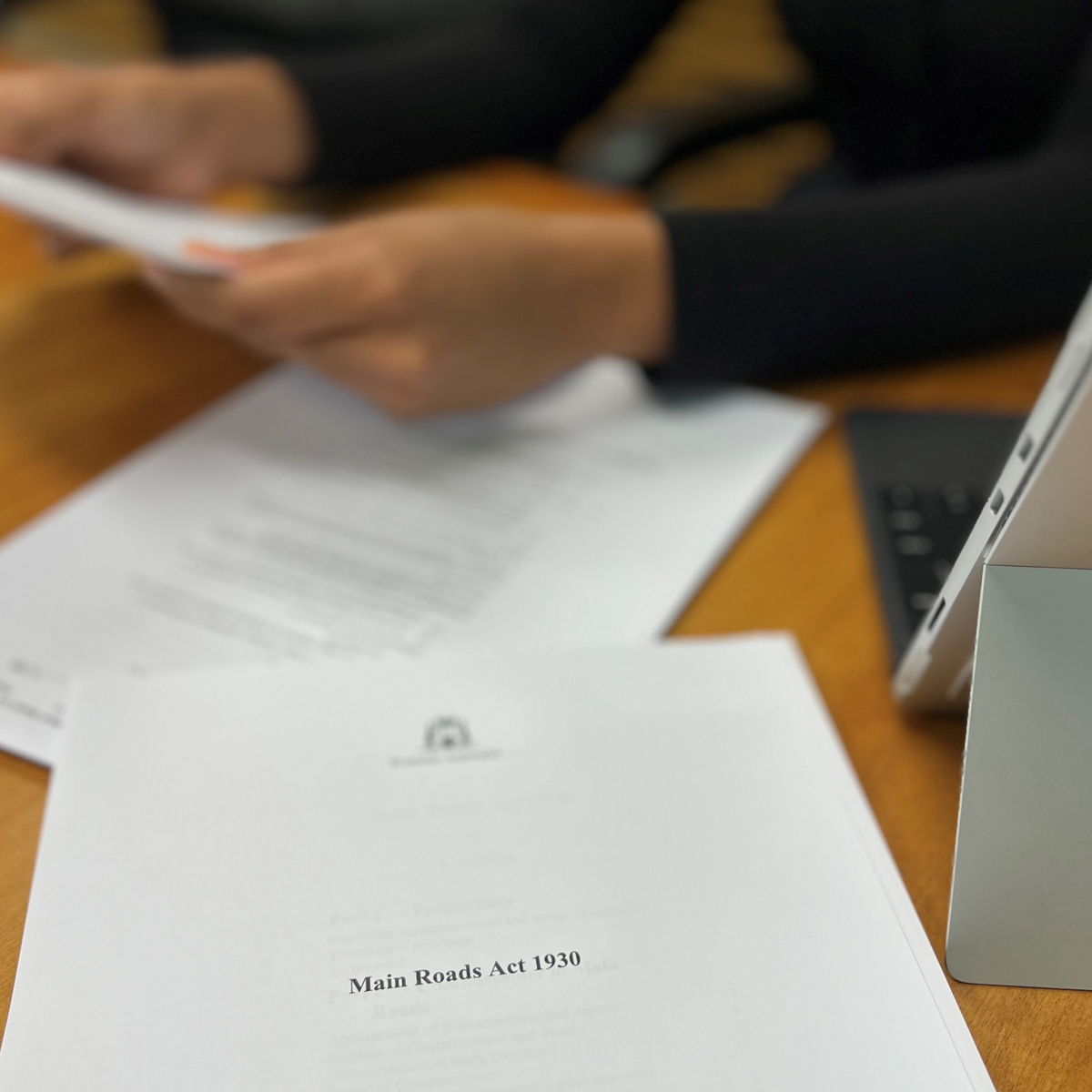Governance and risk
How we are structured
Transport Portfolio
Our state’s three key transport agencies work together as the Transport Portfolio. The agencies, Main Roads, Department of Transport and Public Transport Authority work collaboratively sharing expertise and coordinating delivery of infrastructure and services across the state. Whilst the agencies have different roles and functions, they all report to the Director General who is concurrently the Commissioner of Main Roads, Director General of Transport, and the Chief Executive of the Public Transport Authority.
Transport Portfolio organisational structure
Main Roads structure
This reflects how we are structured, further information about our Corporate Executive can be found in the ‘Our leaders’ section.
Governing bodies
Governance is driven by Main Roads committing to achieving our aspiration, complying with all relevant laws and standards, and meeting public expectations of probity, accountability, integrity and transparency. This approach not only guides us in improving performance and delivering value in our business activities but also shapes our governance model, illustrating the relationships between our Minister, Commissioner, and Corporate Executive underpinned by specialist sub-committees.
We cultivate a governance culture dedicated to upholding a high standard of integrity and accountability. Our governance culture reflects our values and is supported by our Integrity Framework and Code of Conduct. This approach positions us for a Future focused on ethical leadership.
Corporate Executive
Corporate Executive is our peak decision-making body. Its objective is ‘setting clear strategic direction to deliver government priorities, meet our Aspiration and achieve agreed performance goals.
| Role | Focus Areas from the past year |
|---|---|
| Support Transport Portfolio Governance Council | |
| Act as an advisory body to the Managing Director | |
| Achieve the best outcomes from key decisions, develop executive commitment to key organisational priorities and model our values and behaviours | |
| Provide strategic oversight, decision-making and leadership, management of organisational performance, and certainty for ensuring capability to deliver services | |
| Create a corporate culture of integrity and accountability by demonstrating professional behaviours consistent with our values, Code of Conduct and Integrity Framework | |
| Operate proactively, oriented to the long term and being outcomes-focused | |
We have established executive sub-committees to provide support and guidance for specific aspects of the business. This year sees the elevation of the ICT (information and communications technology) Governance Committee into this structure, recognising the significance of cyber security and the ongoing importance of ICT in delivery of our services to the community.
Management Review and Audit Committee
This committee provides oversight and advice on the effectiveness of our corporate governance including risk management, control processes and internal audit. It is an independent committee.
| Role | Focus Areas from the past year |
|---|---|
Budget Committee
This committee ensures financial management oversight and best use of funds to achieve our strategic outcomes.
| Role | Focus Areas from the past year |
|---|---|
— investment planning — program development — annual finance and budget performance — financial management — budget management — working capital management |
|
Corporate Safety, Health and Wellbeing Committee
This committee directs priorities and oversees the wellbeing of our workforce and the people who work with us.
| Role | Focus Areas from the past year |
|---|---|
Investment Committee
This committee is the peak decision-making body for strategic network development, project investment and investment planning and it oversees development of the 10 year unfunded investment program and strategic asset plan.
| Role | Focus Areas from the past year |
|---|---|
ICT Governance Committee
This committee provides overarching guidance and support in the implementation of ICT (information and communications technology) strategy and frameworks, processes and systems and monitoring ICT service delivery.
| Role | Focus Areas from the past year |
|---|---|
Main Roads Act amended

The Main Roads Act 1930 (WA) details the activities and operations of Main Roads Western Australia. These activities are constrained by the powers and duties conferred on the Commissioner of Main Roads under the Main Roads Act.
The Act was first developed and debated in Parliament in December 1924 and ultimately came into force on 7 June 1926. There were four main parts to the original Act - the formation and composition of the Main Roads Board, its responsibilities, the classes of roads it would deal with and how money for its activities would be raised.
The Act was amended again during 1930 resulting in creation and appointment of the first Commissioner of Main Roads who subsumed all the powers that the board originally held. In 1952 following a visit to the United States by then commissioner, Jim Young, the Act was amended again to introduce controlledaccess highways. This reflected the changing nature of road transport and the growth in the motor vehicle ownership.
Over the years there were minor amendments to the Act with the last most significant changes made in 1996. In recognition that the Act was written in the context of an early 20th century, largely undeveloped state, Main Roads sought to modernise the Act.
In November 2023, the Main Roads Amendment Bill 2023 was passed by Parliament to enable the most significant and extensive changes ever made to the Act enabling us to operate as a modern road agency well placed to serve the community of Western Australia into the future.










